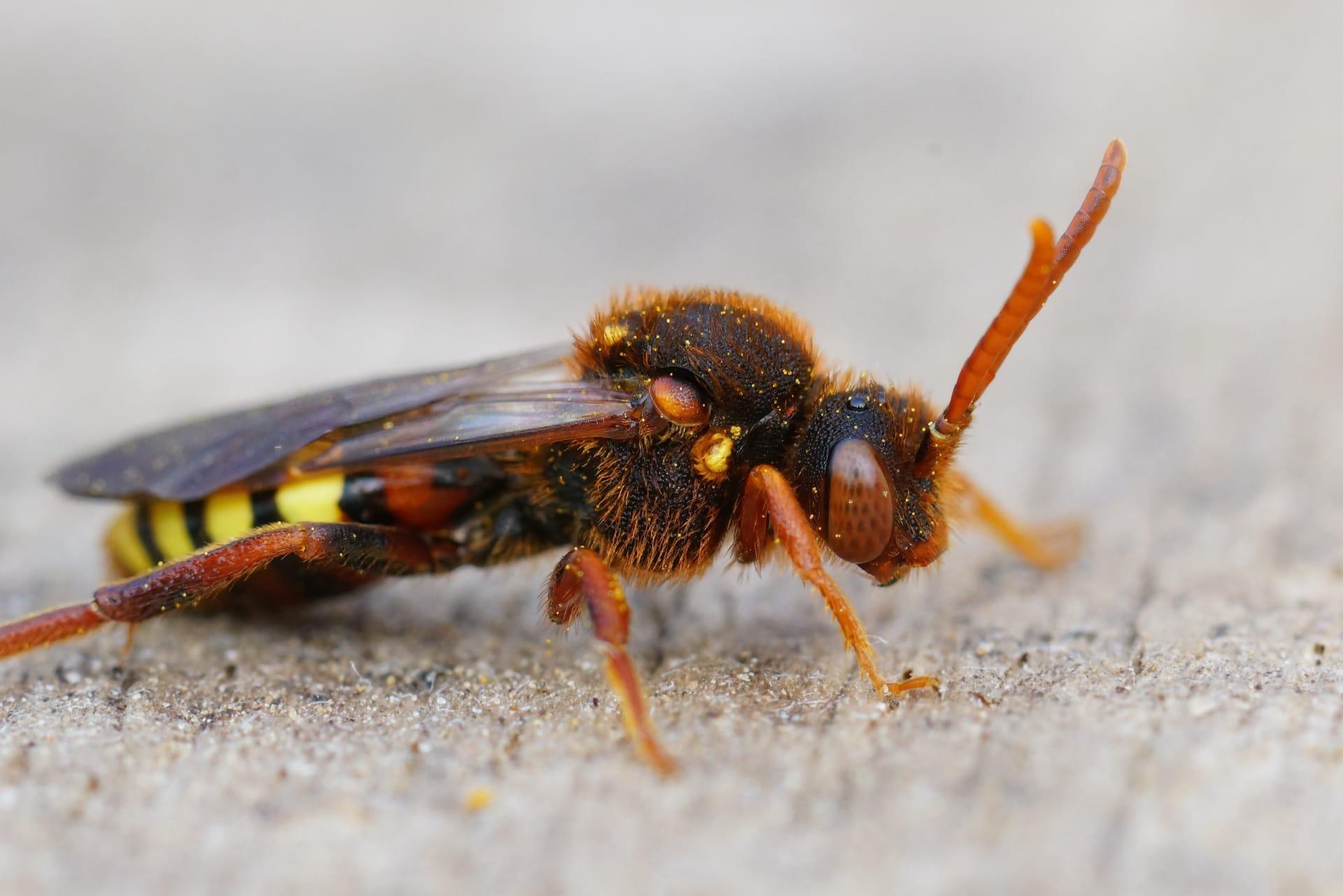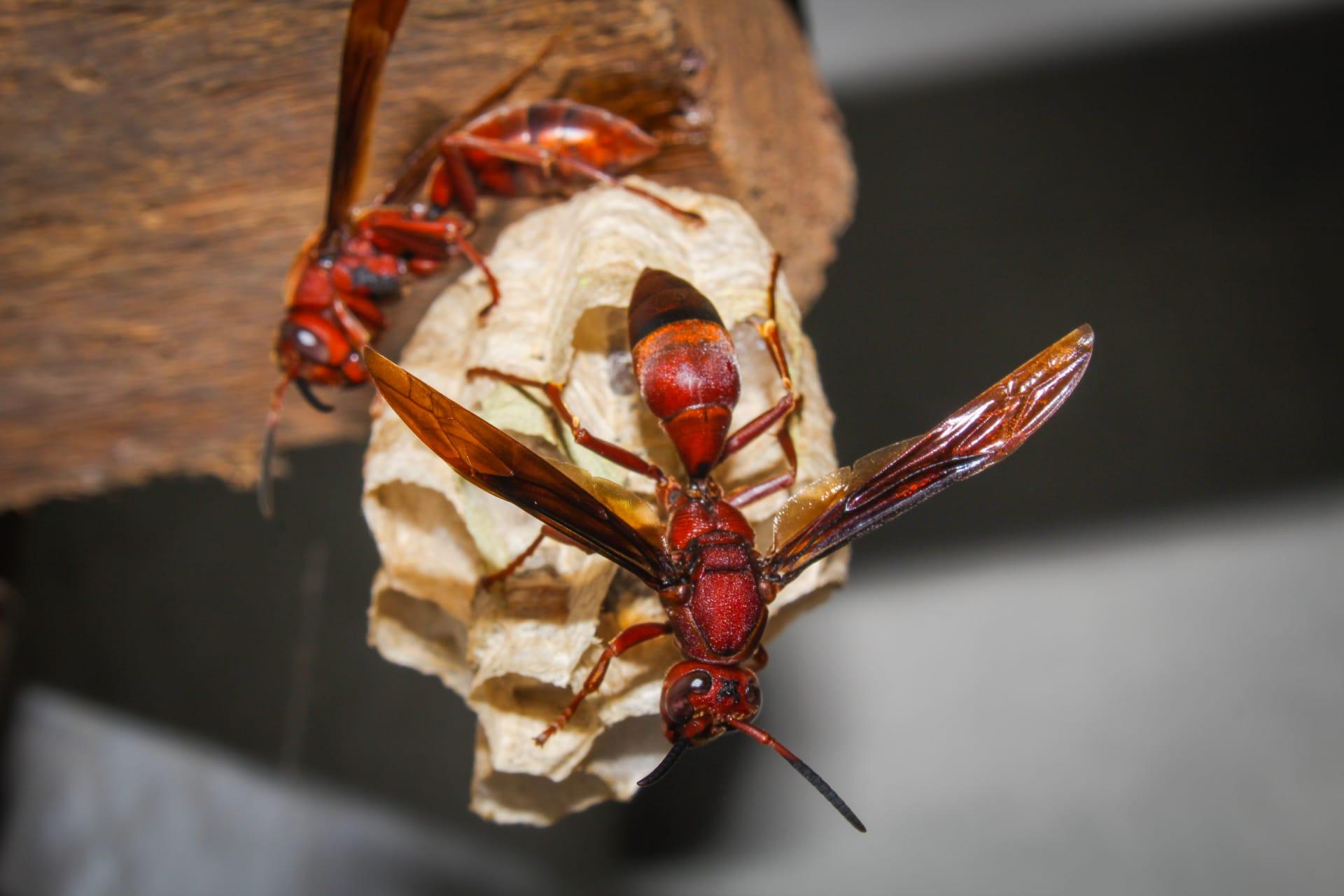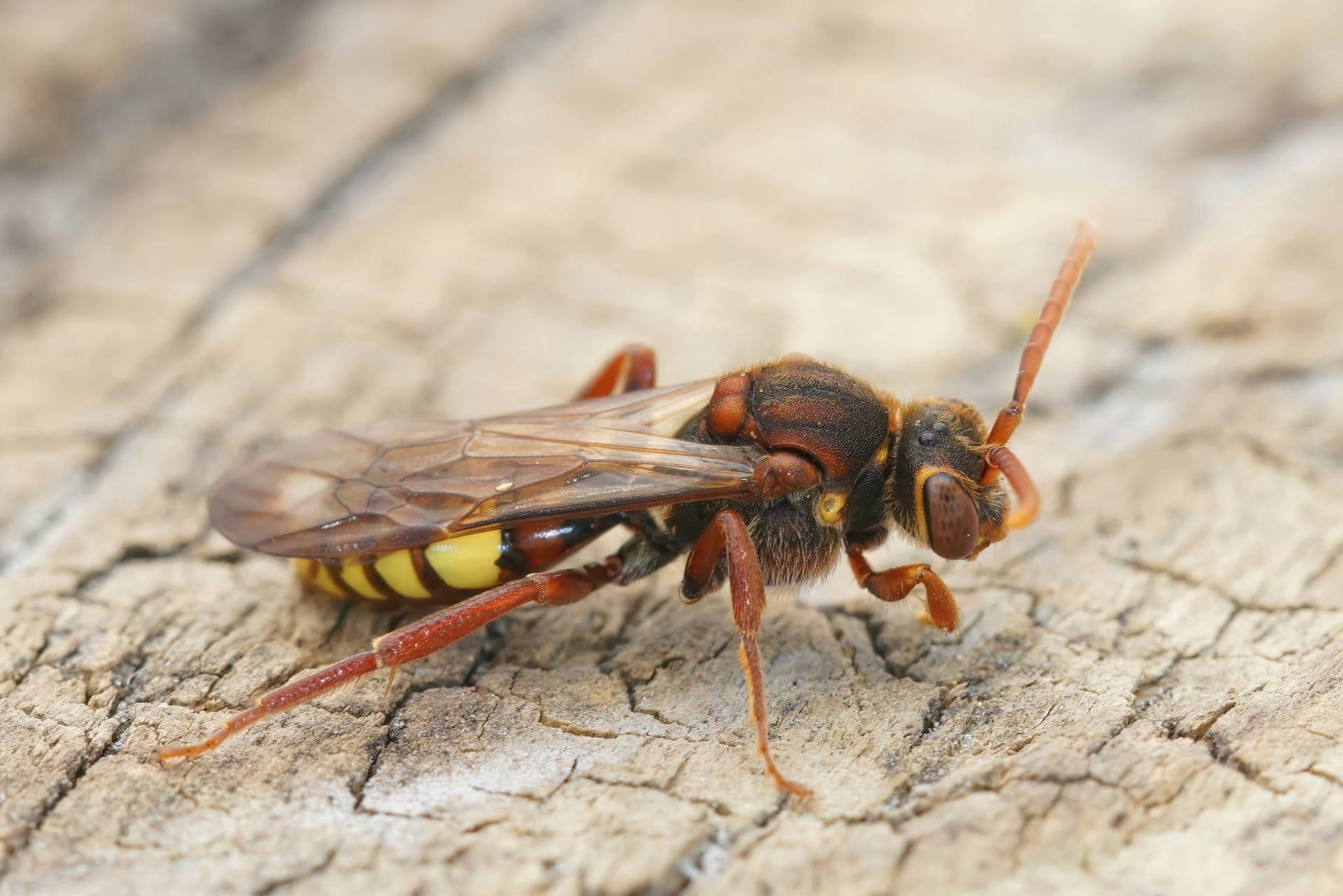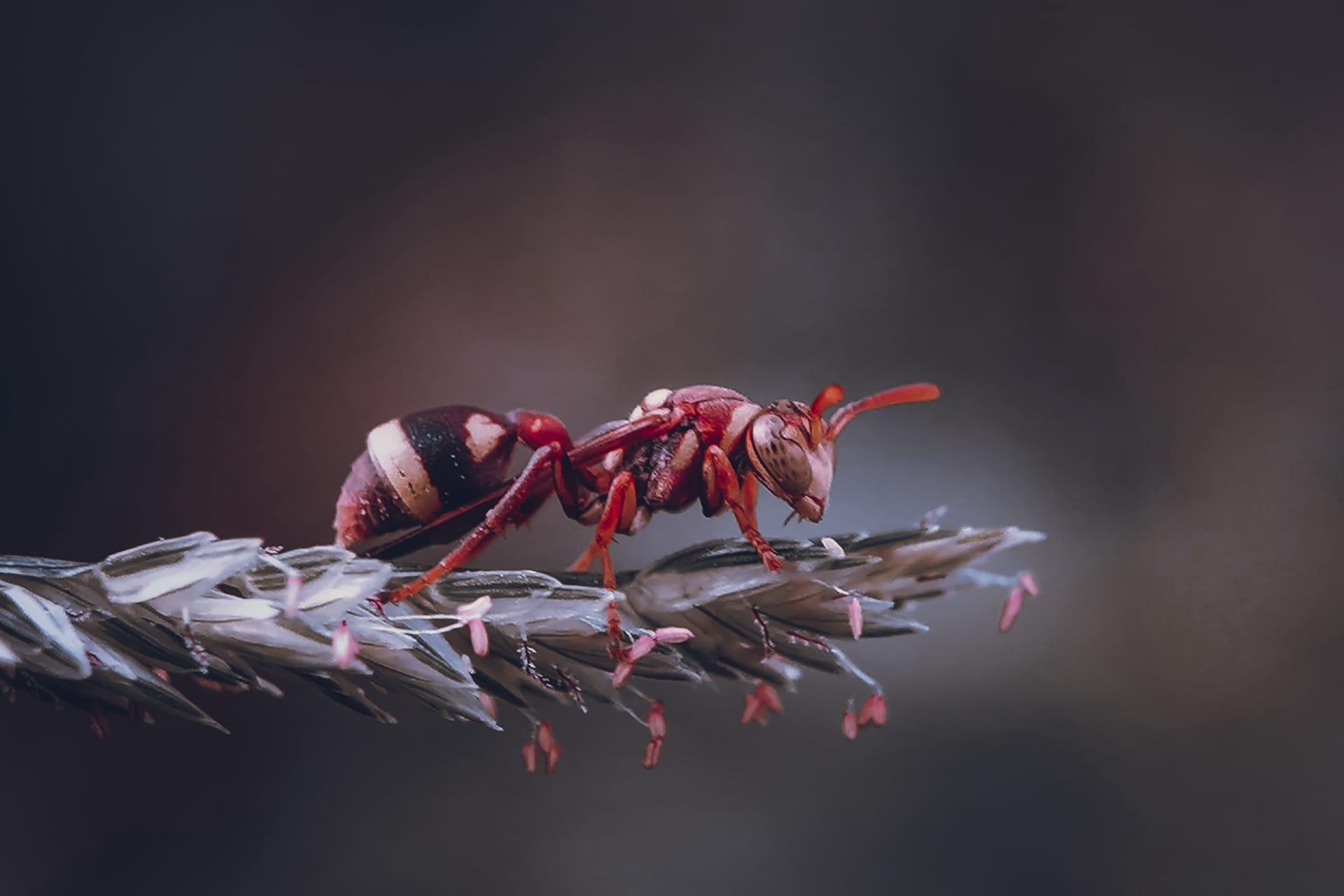Red Wasp Characteristics
- Home /
- Mini Encyclopedia /
- Animal /
- Red Wasp Characteristics
1
Red Wasps, scientifically known as Polistes carolina, are notable for their distinctive red and black bodies, which average about 1 inch (2.54 cm) in length. They have a slender build with a narrow waist connecting the thorax and abdomen. Red Wasps are among the larger species in their family and can be quite intimidating due to their size. Their lifespan typically ranges from one season to the next, rarely exceeding one year. A key aspect of their biology is their ability to adapt and thrive in various environments, a trait that contributes to their widespread presence across different habitats.
The most remarkable organ of the Red Wasp is its sting, an evolved ovipositor primarily used for defense and hunting. Unlike bees, wasps can sting multiple times. This sting delivers a venom that can cause pain and swelling in humans and is potent enough to paralyze smaller insects, which the wasp often feeds on or provides to their larvae. The sting's dual purpose of defense and feeding underlines the wasp's role in the ecosystem as both a predator and a protector of its colony.

2
Question: Why do Red Wasps become more aggressive near the end of summer?
Answer: Red Wasps' increased aggression in late summer is primarily due to the change in their colony's dynamics. Throughout spring and early summer, their focus is on building the colony and raising young. However, by late summer, the next generation of wasps is mature, and the colony shifts its focus to gathering food to sustain the queen through winter. This transition leads to more wasps searching for food, often bringing them into contact with humans. Furthermore, the declining availability of food sources during this period makes the wasps more defensive and aggressive in protecting what they have gathered. This behavior reflects their instinct to ensure the survival of their colony and queen.

3
Red Wasps exhibit fascinating movement characteristics. They are capable flyers, able to navigate swiftly and with agility, which is essential for hunting and evading predators. Their flight speed can vary, but they are known for rapid movements, especially when threatened or during hunting. Their wings are robust and can carry them over considerable distances, reflecting their adaptability in various environments.
In terms of feeding, Red Wasps are omnivorous. They primarily feed on nectar, tree sap, and fruit juices, which provide them with carbohydrates. However, they are also proficient hunters of small insects and caterpillars, which they paralyze with their sting and feed to their larvae. This hunting behavior is crucial for the protein needs of their developing young. Adults may also consume parts of their prey, reflecting their diverse dietary habits.

4
Red Wasps thrive in a variety of environments, ranging from rural to urban areas. They prefer temperate climates and are commonly found in gardens, orchards, forests, and even within human settlements. Their adaptability to different habitats is a key factor in their widespread distribution. They construct their nests in sheltered places like eaves, attics, or dense foliage, often choosing locations that offer protection from predators and harsh weather conditions.
The reproduction of Red Wasps is centered around a social structure led by a queen. In spring, a fertilized queen starts a new colony by building a nest and laying eggs. These hatch into worker wasps, which then take over the expansion of the nest and care for subsequent offspring. Males are produced later in the season, along with new queens. These mate, and the cycle begins anew with fertilized queens overwintering to start their colonies the following spring. This cycle highlights the wasps' intricate social structure and their role in maintaining the species' continuity.

5
Book: "The World of Wasps" by Dr. Elizabeth Martin, published in the United States in 1998, offers an insightful exploration into the lives of various wasp species, including the Red Wasp. Martin, an entomologist, provides a detailed account of their behavior, social structure, and interaction with the environment. The book is praised for its comprehensive coverage and is an excellent resource for both enthusiasts and professionals.
Book: "Wings of Fire: The Life of the Red Wasp" by John H. Lawrence, published in Australia in 2003, is a captivating narrative that blends scientific facts with engaging storytelling. Lawrence, a wildlife biologist, delves into the intricate world of Red Wasps, discussing their survival strategies, predatory skills, and the ecological impact they have. His vivid descriptions and in-depth analysis make this book a fascinating read for anyone interested in understanding these complex insects.